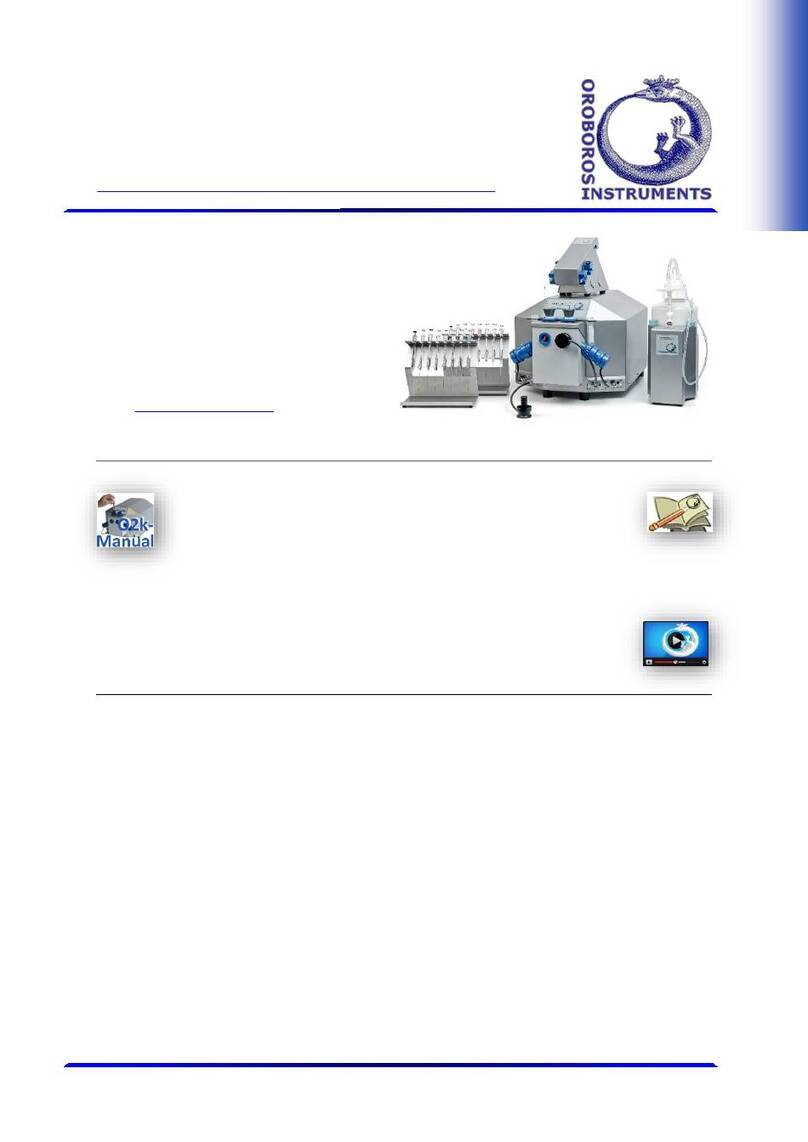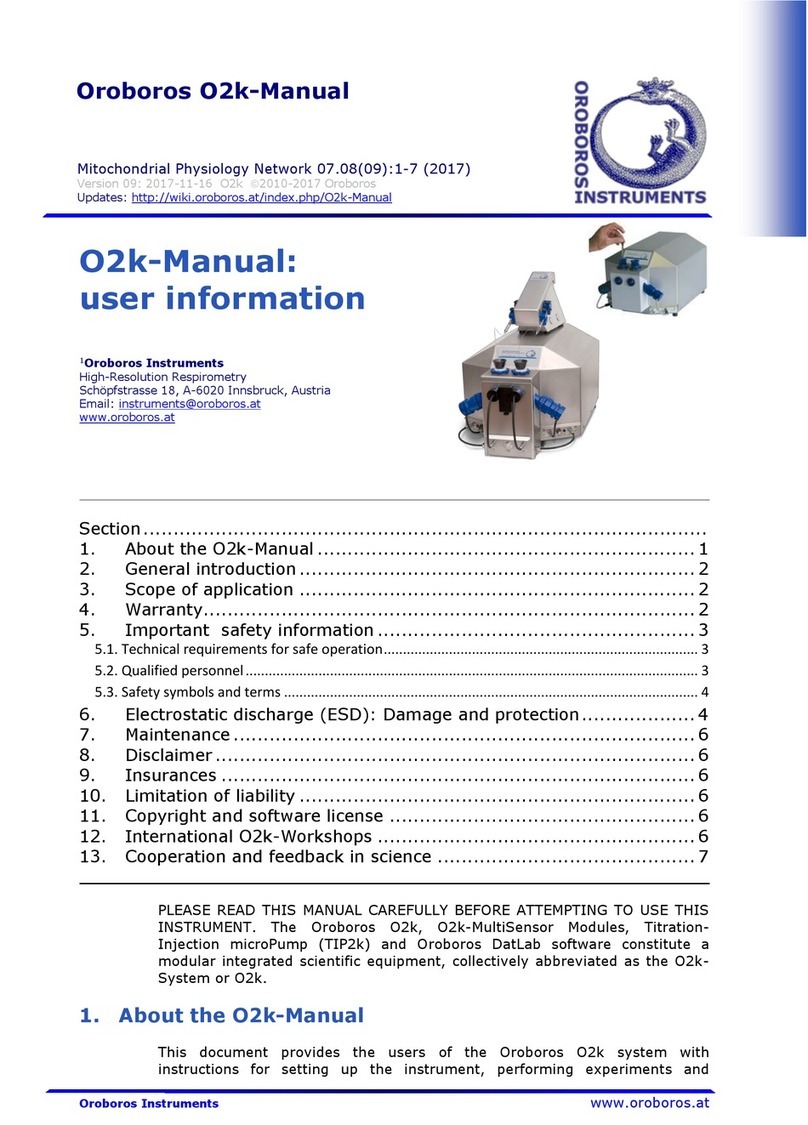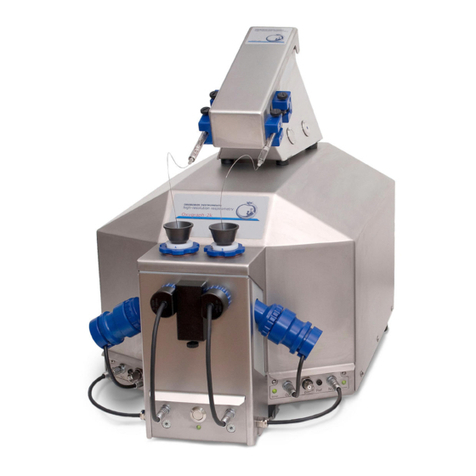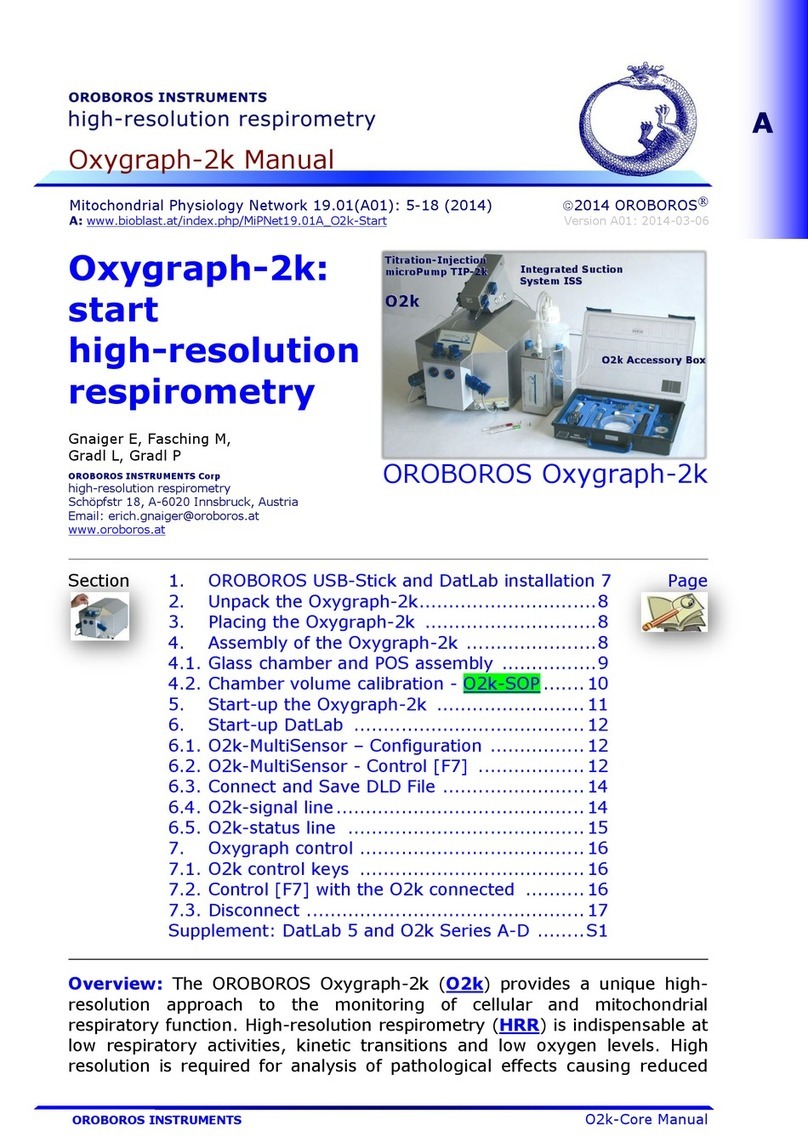MiPNet15.03 O2k-MultiSensor-ISE 10
Oroboros Instruments Mitochondria and cell research
Short term: Place the tip of the electrode in a test
tube or beaker containing reference electrolyte (3 M
KCl). Falcon type 15 mL vials are well suited. If
necessary, refill electrolyte before use.
Long-term (>4 weeks): Remove the glass barrel
containing the electrolyte and store the entire glass
barrel in a closed test tube filled with the reference
electrolyte. Rinse the silver wire and electrode cap to
remove the salt solution and dry using an absorbent
towel. Store in the accessory box or any closed
container to keep dust off the electrode and protect
from light.
Troubleshooting: Try to locate the problem either at the measuring
ISE or at the reference electrode by switching
electrodes. If you have only one reference electrode
you can switch to a spare glass barrel for diagnostic
purposes. The following text assumes that the problem
was located on the reference electrode.
Little or no response: Inspect the electrode for visible cracks.
If any exists, the glass barrel is defective and must be
replaced with a spare. The slightest crack in or around
the tip of the electrode may cause the electrode to read
about the same signal in all solutions.
Response pegs OFF scale: 1) Check the pX gain setting.
2) Visually inspect the electrode for broken or
dissolving internal Ag-AgCl wire or for inadequate
volume of reference electrolyte. Reference electrolyte
level should be above the Ag-AgCl element.
3) Blocked or clogged liquid junction –first clean
electrode tip, then soak it in warm (not hot) distilled
water for 5 to 10 min. If still clogged, remove the wire
from the glass barrel, clean the barrel with distilled
water, then soak it in distilled water. Next, clean it with
enzyme cleaning solution such as Terg-a-zyme
(Alconox, Inc.) to remove protein from the reference
junction. If still clogged, replace reference barrel with
spare barrel supplied.
3. O2k-MultiSensor system
The O2k-FluoRespirometer supports all add-on O2k-
Modules and includes all O2k-MultiSensor channels
mentioned below. For O2k- Series B and C see
Appendix.
Before handling the BNC plugs (on the O2k-Main
Unit) and connecting the electrodes, always touch the































